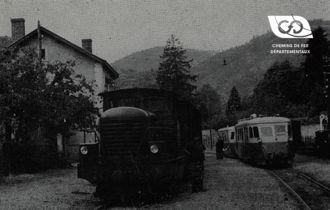From a box two solutions
In 1961, the S.N.C.F. had ordered 35 ZENS gearboxes for diesel locomotives with 150 HP, in addition to the 45 ordered in 1960.
This box was designed by Mr. Pierre ZENS, General Manager of the Cie de Chemins de Fer Départementaux, first of all for diesel locomotives intended for the various lines of the C.F.D. network; and manufactured at the Ateliers C.F.D. de Montmirail where diesel locomotives were built entirely not only for the C.F.D. lines but also for private industry.
Two main ideas guided the development of this box. The first was to obtain a gear change that did not involve a sudden loss of locomotive tractive effort with each passing ; the second was , a gearbox suitable mainly for locomotives rather than railcars , and which could later be adopted for quite considerable power.
Solving the problem led to the gearbox model called "ASYNCHRO"; the second condition having been satisfied by the construction of locomotives of 800 effective HP suitable for both line service and the most arduous operation, although, as a particular consequence of the S.N.C.F. control, of the 80 gearboxes, most of the many transmissions in service are used at less than 400 HP.
Probably more than any other gearbox, the ASYNCHRO gearbox has been specially designed as part of a complete locomotive, and designed by the same technicians.
Originally, small 2- and 5-axle locomotives were built, but the C.F.D.'s activity was directed towards the construction of larger locomotives for traction on several of their lines, and the later development of the locomotive and transmission was considered to be a single issue.
It appeared necessary to avoid any major break in the tractive effort during the change of gearing in order to eliminate shocks and jolts due to the non-rigid coupling of wagons; also to ensure essential continuous traction for the locomotives of 25 to 30 tonnes and over and 300 to 400 HP of effective power that were envisaged.
In addition, with a mechanical transmission, the engine speed is proportional to the driving speed in each gear ratio, and consideration had to be given to being able to disconnect the engine from the driving wheels, for example when shifting gears or during a somewhat rough crash, which was achieved by introducing a freewheeling system between the gearbox and the drive axle, a device which also has other advantages such as preventing overloading of the engine. Finally, a spring-controlled cage model was adopted in preference to the more traditional roller type; and a hydraulic coupler was also inserted in the transmission to obtain a soft start and eliminate clutch wear.





